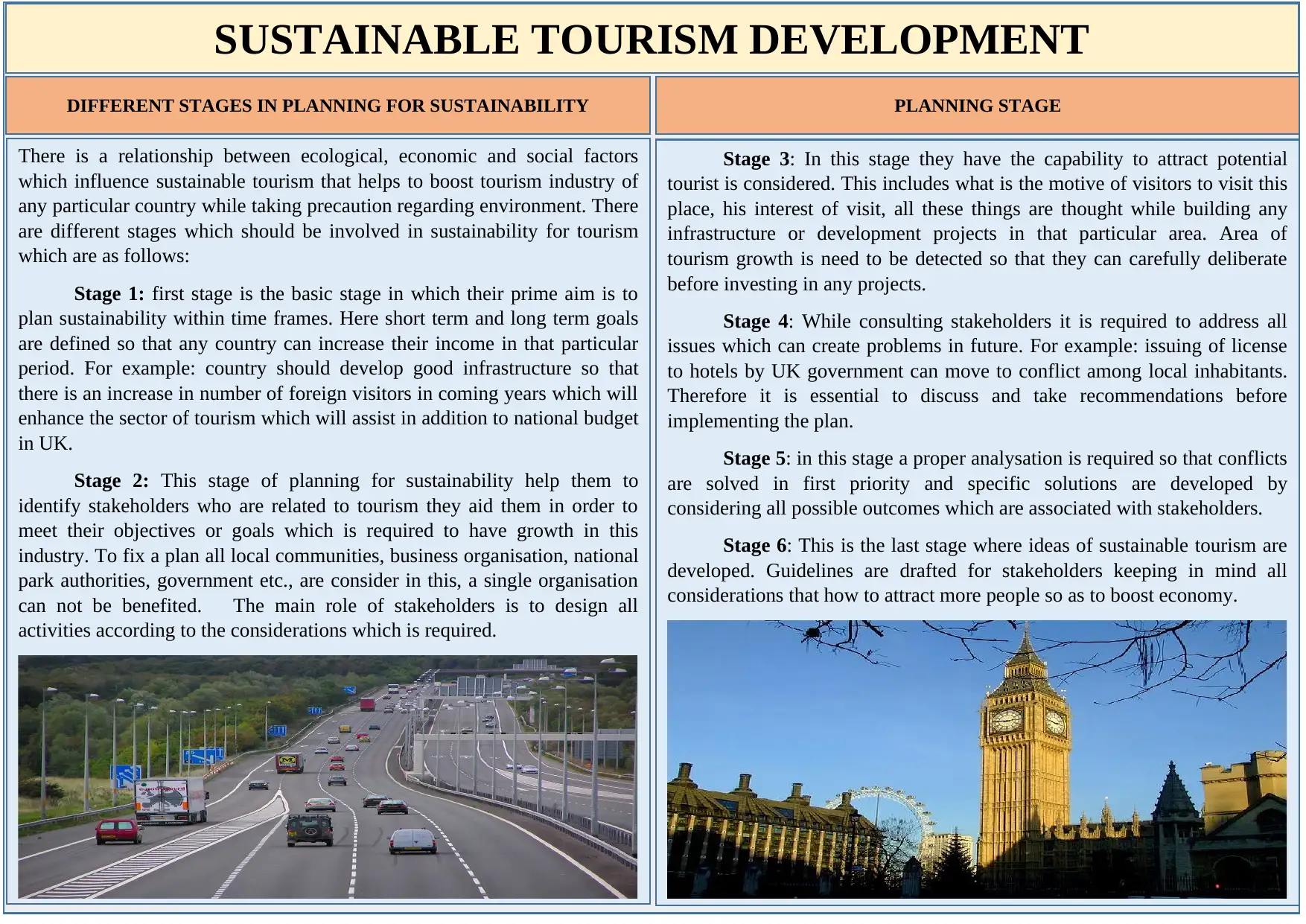Sustainable Tourism Development: A Stage-by-Stage Planning Guide
VerifiedAdded on 2023/03/22
|1
|431
|81
Essay
AI Summary
This essay discusses the various stages involved in planning for sustainable tourism development, emphasizing the relationship between ecological, economic, and social factors. It highlights the importance of attracting potential tourists, defining short-term and long-term goals, and identifying stakeholders such as local communities, business organizations, and government entities. The planning process includes addressing potential issues and conflicts through proper analysis and developing specific solutions with stakeholder input. The final stage involves creating guidelines for sustainable tourism, aiming to attract more visitors while boosting the economy, with considerations for environmental precautions.






![[object Object]](/_next/static/media/star-bottom.7253800d.svg)